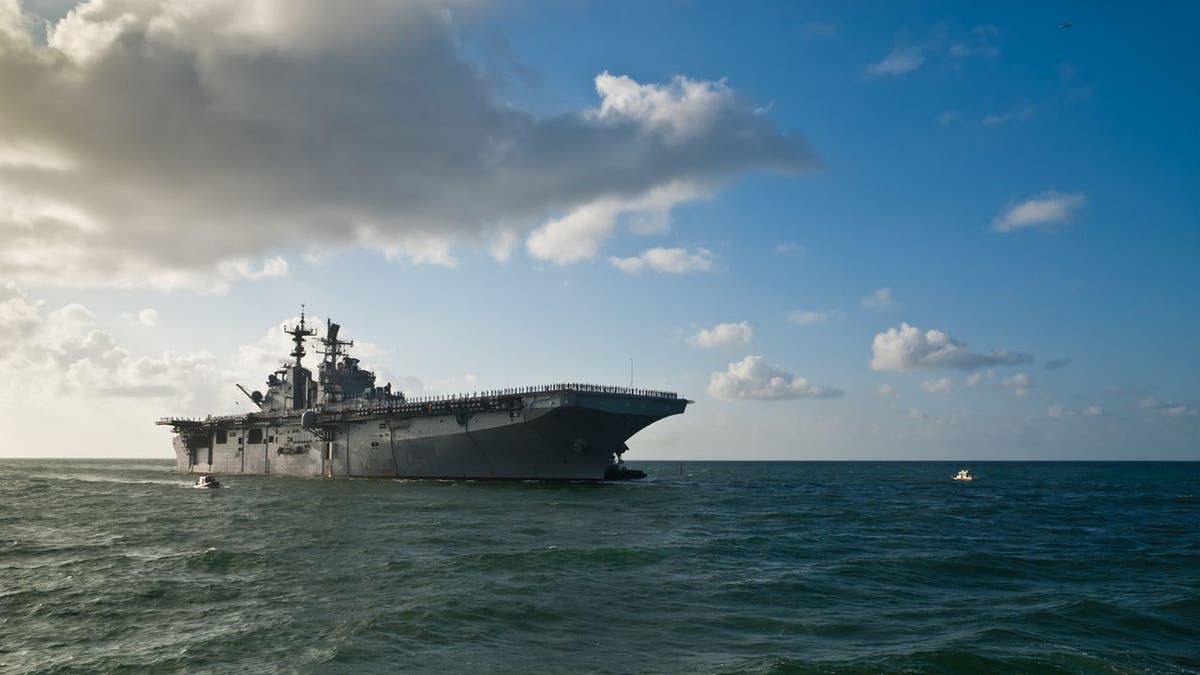Fox News Flash top headlines for June 15
Fox News Flash top headlines are here. Check out what's clicking on Foxnews.com.
The U.S. Navy is looking to develop drones that work in both the sea and air.
Several unclassified documents uploaded under the military branch’s budget materials for 2022 mention the Navy’s ongoing research for the dual-purpose technology, according to The Drive.
Moreover, the news outlet reported that researchers and engineers for the Navy are working on "biocentric" projects that take inspiration from aquatic and airborne animals.
In a 546-page budget estimate submitted for the fiscal year of 2022, the Navy states it aims to advance research into amphibious tactical support units and assault vehicles.
BIDEN DEFENSE BUDGET STAGNATES ON WARSHIPS AS FOCUS SHIFTS TO CHINA
The first volume of this five-part "project justification" book states the Navy wants to create vessels, platforms and soft robots that can perform high-tech and stealthy maneuvers autonomously.
For example, the Navy’s 2022 base plans for autonomous systems and soft robotics aim to have development teams conduct research into "bio-inspired sensing, control, and fluid dynamics of underwater propulsion and control systems to expand capabilities of underwater autonomous and unmanned systems."
The soft robots for tasks such as these could be "worm-like" or share similarities with other creatures, so ocean floors can be analyzed for geotechnical properties.
Outside of wanting to advance propulsion and sensor technology, the Navy notes it would like to explore sonar, image-processing and "bio-inspired locomotion from amphibious animals" to create "amphibious and cross-domain vehicles."
NAVY CAPTURES FOOTAGE OF PYRAMID-SHAPED UFOS, ORBS

The U.S. Navy is looking to develop amphibious vessels that work in the sea and air, according to budget materials submitted for the fiscal year of 2022. (iStock)
Representatives for the U.S. Navy did not immediately respond to Fox News’ request for comment.
The Navy’s Research, Development, Test & Evaluation team requested more than $25 million combined for "Bio-Inspired Autonomous Systems" and "Bio-Inspired Autonomous Systems and Soft Robotics," The Drive reported.
This isn't the first time the public has gotten a look at technology the Navy has been working on in recent years. Occasionally, the military branch has provided brief glimpses of amphibious ready groups, combat vehicles and landings through its U.S. Navy YouTube channel.
BOEING DRONE REFUELS NAVY FIGHTER JET FOR THE FIRST TIME
In 2014, the Navy shared a test video of an unmanned GhostSwimmer vehicle that resembled and moved like a large fish. The remarkable demonstration took place at the Joint Expeditionary Base Little Creek-Fort Story in Virginia Beach.
Less than a year later, the U.S. Naval Research Laboratory unveiled it was working on an autonomous Flying-Swimmer (Flimmer) vehicle that sports dual fin-wings. However, the sea and air tactical device has not been updated since November 2015.
CLICK HERE FOR THE FOX NEWS APP
Naval forces outside of the U.S. have been investing in boundary-pushing technology as well.
In early May, a video of the British Royal Marines’ testing a jetpack that can travel 80 mph and soar 12,000 feet made global headlines.
Meanwhile, multiple reports have suggested that the Russian Navy could be researching ways to utilize aquatic mammals such as dolphins and whales for reconnaissance missions. In 2019, a beluga whale was found wearing a GoPro-equipped harness that had an inscription claiming the item was from St. Petersburg.

